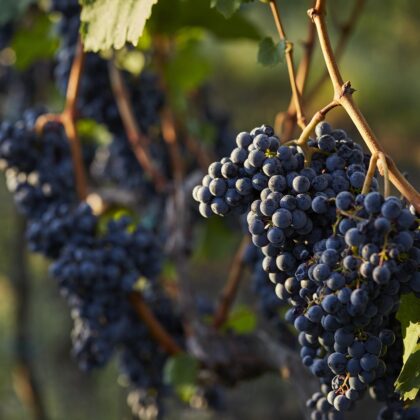Looking at wine labels, one often comes across the term ‘cuvée’, which refers to the fact that the wine in the bottle was made by coupage. The procedure is nothing less than the expert blending of the wines of different grape varieties – or vineyards – in order to achieve the most interesting, harmonic and sophisticated wine. Cuvées and several varietal wines of Veszprém Archdiocese Winery are made by blending; this process started not long ago. The objective is that as the outcome of the process we are able to reveal as far as possible the totality of the two producer areas of the Winery – Mindszentkálla and Felsőörs – and that we can create truly delicious, good quality Balaton wines, head winemaker Antal Benesch declares.

Coupage
Coupage is a well-known and frequently used wine making method. It is partly a reflection of the characteristics of the arable land of a given winery, but the nature of the blending is also influenced by the oenological goal. The essence of the process, in brief: the blending of different batches and different vineyards so that they showcase to the best effect the characteristics of the varieties and different localities. We make every effort to ensure that cuvée wines reinforce each other, thereby establishing a special harmony, head winemaker Antal Benesch says in summing up this process.
Coupage, as a winemaking process, has to follow strict rules and is a procedure requiring enormous care and expertise. It requires a profound understanding of the characteristics of the wines and varieties being blended, and the blend proportions must also be determined. When on a wine label we see the different ingredients that have gone into making a given cuvée, in general the name of the grape variety that is represented in the wine to the greatest extent appears first, followed by a listing of the other elements, based on their proportion in the blend, in descending order.
Cuvées of Veszprém Archdiocese Winery
February marks the start of the blending of the cuvée wines and independent varietal wines as well at the Winery. The effects of the extreme heat experienced last year are fully apparent in our wines. At the end of the harvest I hoped, and now I can announce with full confidence, that there will be specialities amongst our wines. In the case of our white estate wines, and similarly to the 2021 vintage, the Rajnai Rizling (Rhine Riesling) and Olaszrizling (Welschriesling or Italian Riesling) will be accentuated, and a little Sauvignon Blanc will appear as ‘spice’. We make every effort, just as we did in previous years, to pinpoint the true Balaton wine recipe, explains Antal Benesch. The head winemaker also goes on to say that this year, too, the Sauvignon Blanc and Rajnai Rizling varietal wines of the Archdiocese Winery will be made up from the blending of two vineyards and different clones. In autumn 2022, they succeeded in harvesting a biologically ripened (fully ripe) Rajnai Rizling from the Mindszentkálla estate, so they are sure to be able to bring out a premium category, ‘limited edition’ Rajnai Rizling, which will be put away for bottle maturing for at least six months, the head winemaker adds.
Veszprém Archdiocese Winery
Veszprém Archdiocese (and its legal predecessor Veszprém Bishopric) has been engaged in grape cultivation and winemaking for about 750 years, since 1277. To this day, the Archdiocese Winery carries out – within the framework of the diocese – viticulture on two estates it owns, in Felsőörs that belongs to the Balatonfüred-Csopak Wine Region, and Mindszentkálla in the Kál Basin lying in the Balaton Highland Wine Region. Winemaking is conducted using state-of-the-art techniques, equipment and know-how while also respecting traditions. Antal Benesch has run the Winery located on the estate of the Archdiocese as head winemaker for the past two years.



